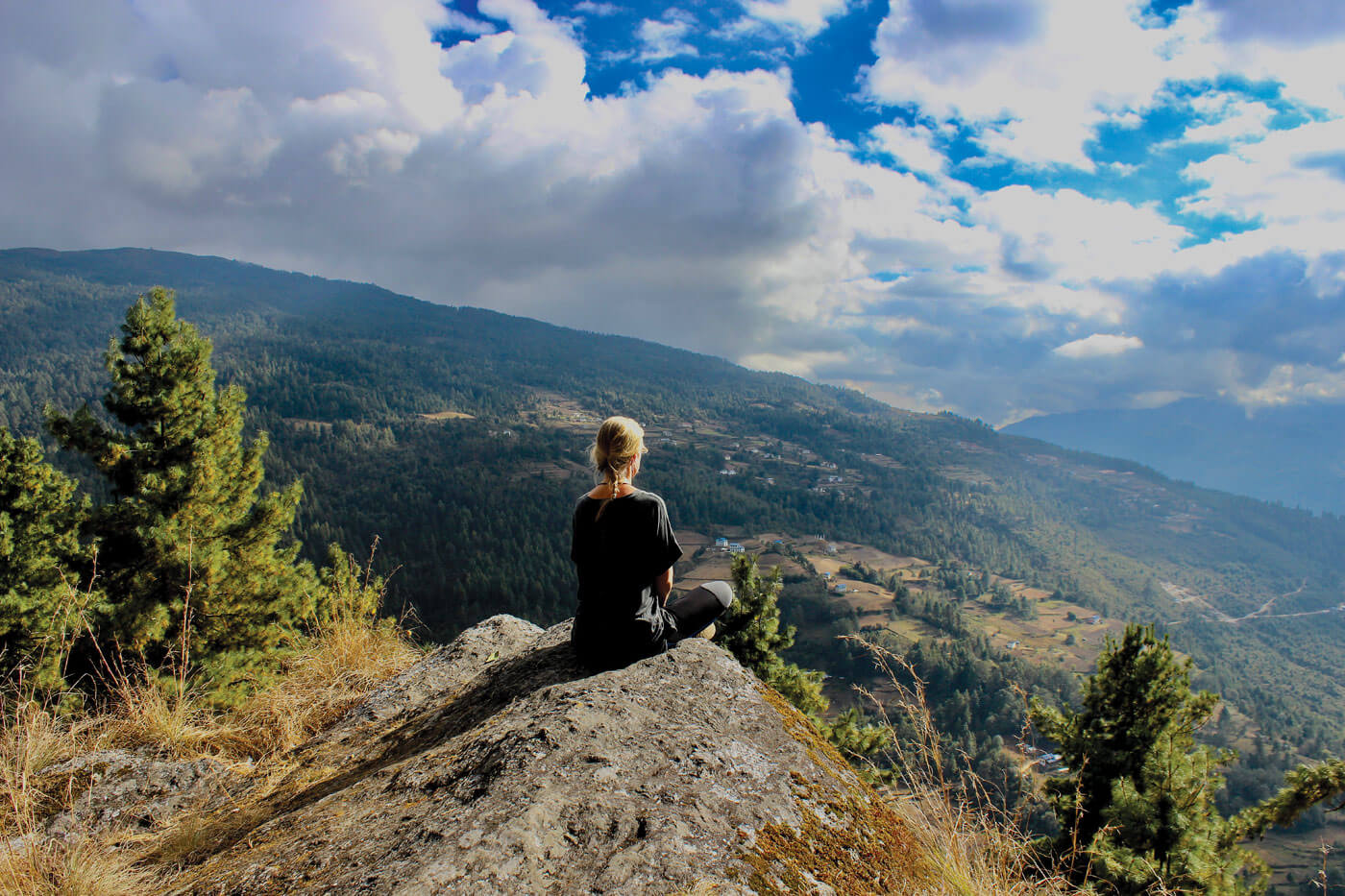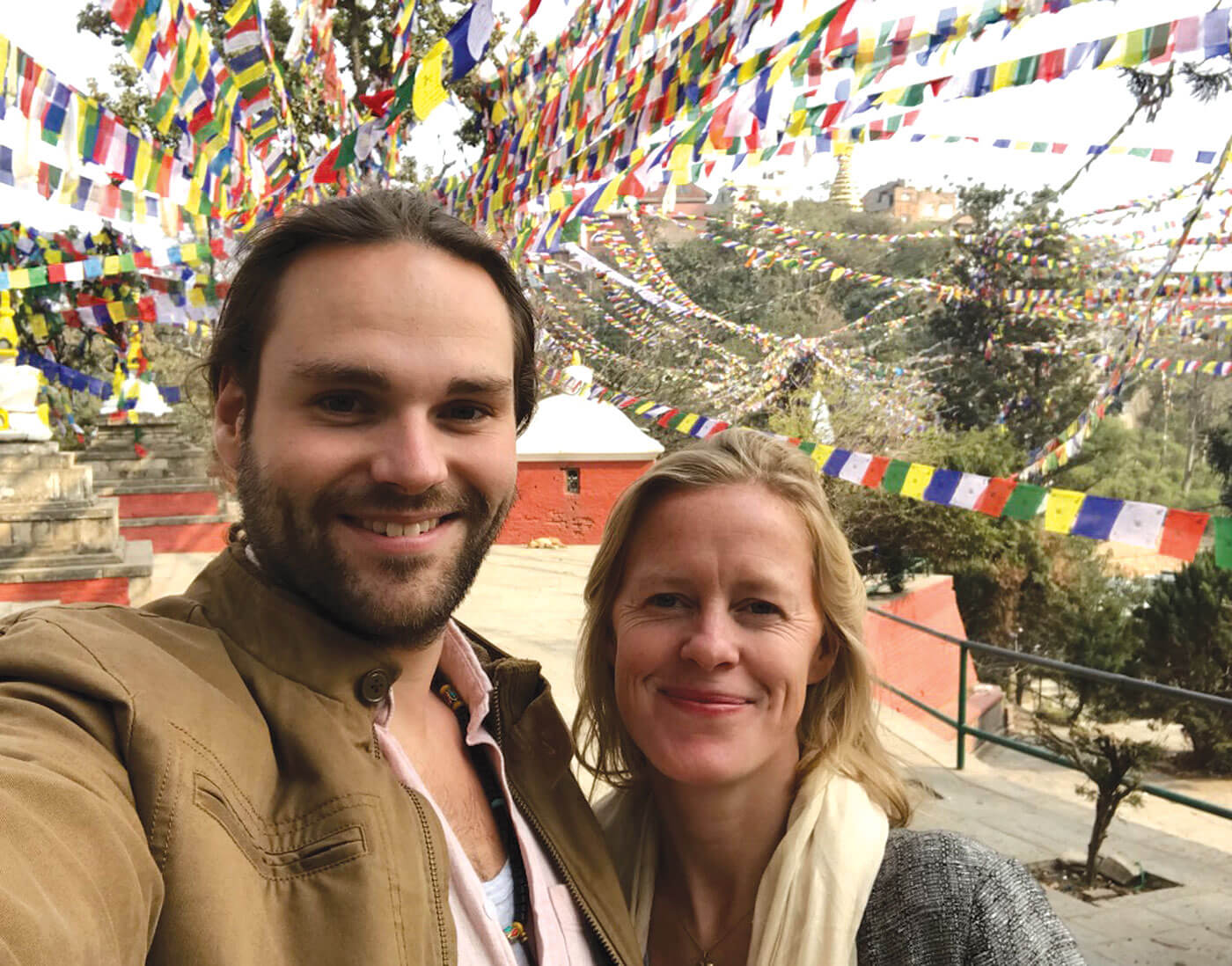To make up for monsoon slack, Nepal opts for spiritual tourism

Whenever tourism in Nepal suffers a slump, it is young westerners seeking enlightenment that compensate for fewer visitor numbers.
After every political upheaval, like the 2001 royal massacre or the decade-long conflict, or disasters like the 2015 earthquake, meditation students kept Nepal’s tourism economy afloat.
Tourists seeking spiritual upliftment and detox from the stress of modern life and materialism, have flocked to Nepal ever since the hippie days. But lately, there are monasteries and temples that cater specifically to customers who come to Nepal to learn meditation techniques like vipassana, take intensive yoga classes, or to seek solitude and communion with nature.
Indeed, the word gompa is derived from the Tibetan word for meditation, and it is where devotees go to pray, train their mind to concentrate on a positive mental attitude, and attain a blissful state. Meditation allows people to gain mindfulness, consciousness, and detoxify their desires and negative thoughts like jealousy, anger and greed.

As global headlines about the coming climate apocalypse, wars and political unraveling bombard people every minute of every day through the social web and the mass media, people need to take time off to be with their inner selves.
“This is the path to regain mental equilibrium and restore one's healthy mental state as meditation pushes out feelings of jealousy, anger and greed,” explains Geshe Lobsang Sherap at Kopan Monastery near Kathmandu, one of the pioneers of meditation tourism in Nepal. (See box.)
There are now customised meditation tours and packages, spiritual and spa trekking that combine yoga for the purification of both the body and mind. After all, the Himalaya is where Hindu and Buddhist sages have gone for millennia to meditate, cleanse their souls and even attain nirvana.
Himalayan Hermitage is one agency working with local partners to facilitate meditation tours and pilgrims inside Kathmandu and around various sacred places in the Himalaya.
Alex d’Artois and Sisse Budolfsen started Himalayan Hermitage after spending many years in Nepal studying Buddhism, philosophy and meditation, and found many blessings during their stay here.
“Meditation is all about mind practice, cultivating sanity, becoming better human beings, attaining innate compassion and wisdom,” explains d’Artois. "It is not about trying to be something or someone. It is cleaning up our mess, and connecting with reality. Nepal is the perfect place for meditation because life here is less hurried and people are simple, relaxed and at peace.”

Himalayan Hermitage works with local partners to facilitate meditation pilgrimages in Nepal, India, Bhutan with spiritual journeys into sacred valleys like Tsum, Solu Khumbu, Dolpo, Mustang and Manang where they practice mediation amidst sublime scenery.
“These sacred valleys of the beyul have a sanctity that is hard to explain, they have healing properties,” adds d’Artois, a Canadian who has studied Buddhist philosophy.
Himalayan Hermitage combines western and eastern perspectives, and prefers to call its Nepal package ‘pilgrimage’ and the tourists ‘pilgrims’, explaining that the idea of a pilgrimage is non-religious and an inclination of self-introspection that allows pilgrims from around the world to immerse into the culture of Himalaya.
“If I do not meditate, I feel like something is missing, I do not feel fully cleansed and taken care of. A feeling that I didn’t take time for myself,” explains Sisse Budolfsen, who is from Denmark and has been travelling to Nepal and Tibet ever since she first came to Kopan at the age of 20.
According to airport arrival figures, 17% of tourists visiting Nepal last year (some 65,850) said they were here for meditation and spiritual tourism.
“We have specifically prioritised meditation tourism since this is a new concept and a trend,” shares Kabitra Bhatt at Nepal Tourism Board (NTB).
Kopan’s Russian-Hollywood connection

One of the first centres to popularise meditation tourism in Kathmandu Valley is Kopan Monastery which now gets more than 1,500 students every year for its 10-15 day classes.
The history of Kopan is closely tied to the legendary daughter of Russian émigré Zina Rachevsky, whose family fled Russia during the communist revolution, became a Hollywood actress, and arrived in Nepal with the hippies in the 1960s to seek enlightenment.

In 1968, the Russian-French- American socialite became Anila Thubten Chub Palmo (above, left) and was ordained in Dharmashala by Trijang Rimpoche. She bought the land on which Kopan Monastery now stands in Kathmandu Valley for the Nepal Mahayana Gompa Retreat that she set up with Lama Yeshe, (above, right) whom Rachevsky met in Darjeeling.
“Kopan became a refuge for those fleeing materialism and artificial modern lifestyles,” explains Geshe Lobsang Sherap. “Among them was Zina. She met our gurus, Lama Yeshe and Lama Zopa Rinpoche and became their first disciple in 1968.”
The first of 15 American tourists came to Kopan in 1968 to attend a medication course taught by Jamyang Wangmo. Zina Rachevsky died of cholera while on a meditation retreat in Thame in Khumbu in 1973 at the age of 42.




